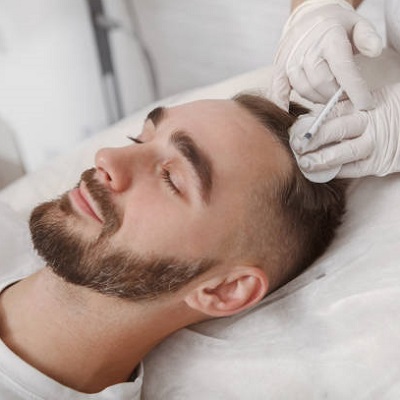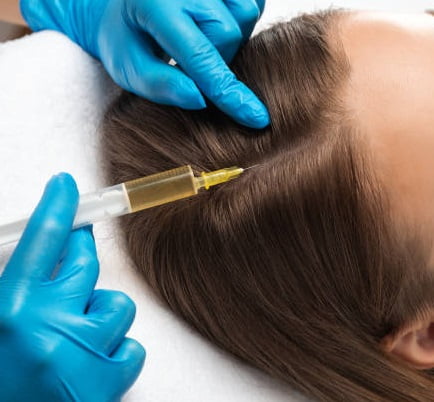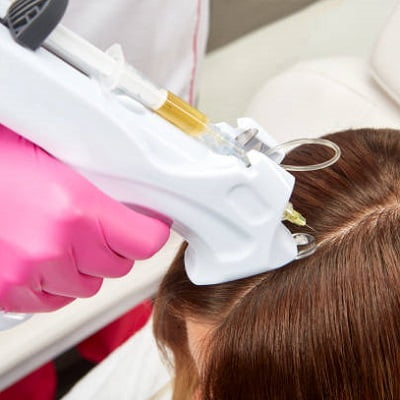
Nowadays, hair loss is a common concern that affects millions of people. Various factors, including genetics, hormonal changes, stress, and medical conditions can cause it. PRP therapy in Islamabad has gained popularity as a non-surgical and potentially effective treatment for hair loss. But how can you know if PRP for hair is working for you?
In this blog post, let’s discover about this hair treatment – PRP therapy and discuss the various indicators that can help you determine its effectiveness.
What Is PRP for Hair?
PRP, or Platelet-Rich Plasma, is a procedure that involves drawing a small amount of your blood, processing it to concentrate the platelets, and then injecting this PRP into the scalp. Platelets contain growth factors that can stimulate hair follicles, promote hair growth, and improve hair density. PRP therapy is believed to work by increasing blood supply to the hair follicles and encouraging the growth phase of hair.
It is generally considered a safe and minimally invasive procedure, as it uses your blood, reducing the risk of allergic reactions or rejection. However, its effectiveness can vary from person to person. How can you determine if PRP for hair is working for you?
Indicators of PRP Effectiveness:
Reduced Hair Loss
One of the most significant signs that PRP therapy works is reducing hair loss. If you notice that you are shedding fewer hairs than before the treatment, it’s a promising indication that PRP positively impacts your hair.
Remember that it may take several weeks or even months to observe a noticeable decrease in hair loss, as hair growth is slow. Additionally, individual results can vary, so be patient and consistent in your treatment plan.
Increased Hair Thickness and Density
Another critical indicator of PRP’s effectiveness is improved hair thickness and density. Over time, you may notice your existing hair becoming stronger, thicker, and more voluminous. It is often a positive sign that PRP is promoting healthier hair growth.
To monitor hair thickness and density changes, you can take photographs of your scalp before and after PRP treatment sessions. Comparing these images over time can help you objectively assess the progress.
New Hair Growth
One of the most exciting outcomes of PRP therapy is the potential for new hair growth in areas where hair has been thinning or receding. It is often the most direct evidence that PRP works effectively for you.
You might notice tiny, fine hairs sprouting in previously bald or thinning areas. As these hairs grow and thicken, they can significantly enhance overall hair coverage. This new growth usually becomes more noticeable after a few months of consistent treatment.
Slowed Hair Recession
If you’ve been experiencing hairline recession or thinning at the temples, a sign of PRP’s effectiveness could be a slowing or halting of this process. The therapy can help to stabilize your existing hair and prevent further loss, giving your hairline a chance to recover.
Monitoring your hairline’s stability and comparing it to your condition before treatment can help you assess the efficacy of PRP therapy in this regard.
Improved Hair Texture and Quality
Not only should PRP therapy promote hair growth, but it can also enhance the quality of your hair. You may notice that your hair becomes shinier, stronger, and more manageable. This results from the increased blood flow and nutrients delivered to your hair follicles through PRP treatment.
Improved hair texture and quality are more subjective indicators, but they contribute to your overall satisfaction with the treatment.
Factors Influencing PRP Effectiveness:
While PRP therapy can be effective for many individuals, its success can be influenced by several factors, including:
- The cause of your hair loss can impact how effective PRP therapy is. It may work better for individuals with androgenetic alopecia (genetic hair loss) or other non-scarring forms of alopecia.
- People respond differently to PRP therapy. Some may experience dramatic improvements, while others may see more modest results. Your genetics and overall health affect how your body responds to the treatment.
- The skill and experience of the practitioner performing the PRP procedure can influence its effectiveness. Choosing a qualified and experienced healthcare provider for the best results is essential.
- Your overall health, diet, and lifestyle choices can also impact the success of PRP therapy. Maintaining a balanced diet, reducing stress, and avoiding harmful hair care practices can support the treatment’s effectiveness.
The Bottom Line!
Platelet-rich plasma (PRP) therapy for hair loss offers a promising non-surgical option for individuals seeking to combat hair thinning and promote hair regrowth. While its effectiveness can vary from person to person, there are clear indicators to help you determine if PRP for hair is working for you.
Ultimately, suppose you’re concerned about hair loss and considering PRP therapy. In that case, you must consult with a qualified healthcare practitioner at SKN Cosmetic Clinic Islamabad, who can assess your specific needs and guide you on the most suitable treatment options. With the right approach and realistic expectations, PRP therapy can be valuable in your journey to healthier, fuller hair.









